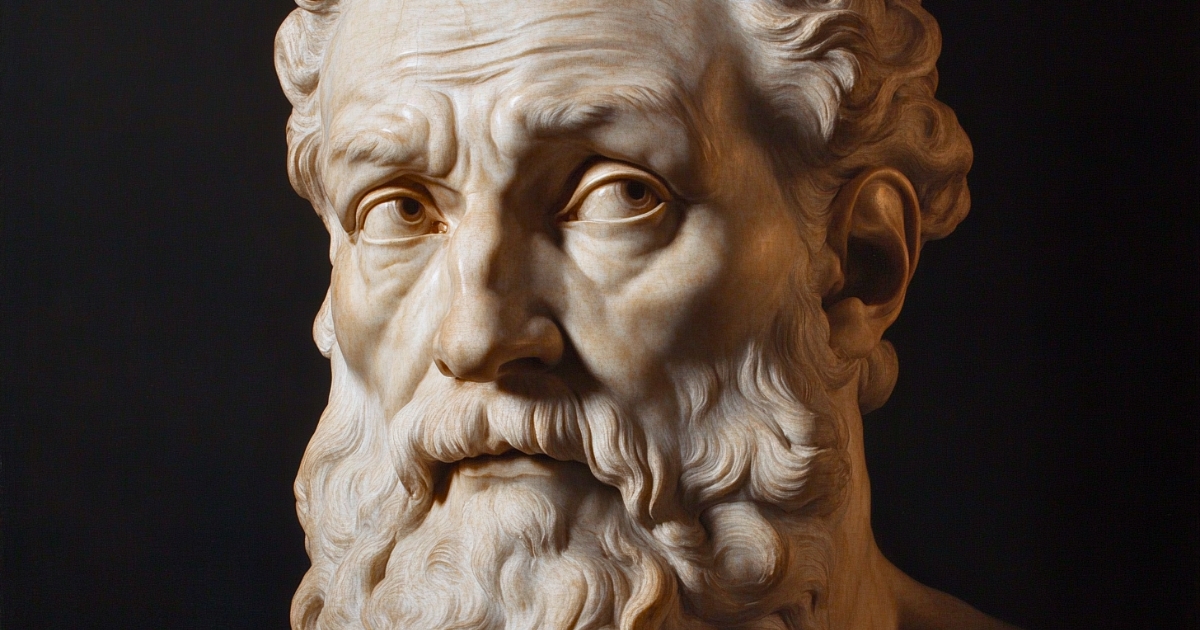Michelangelo Buonarroti, who flourished from the late 15th to the early 16th century, is widely known as a representative artist of the Renaissance period. His name is associated with numerous masterpieces, including the ceiling of the Sistine Chapel and the statue of David. However, Michelangelo was not merely an artist; he was also a passionate explorer in pursuit of the truth about the human body.
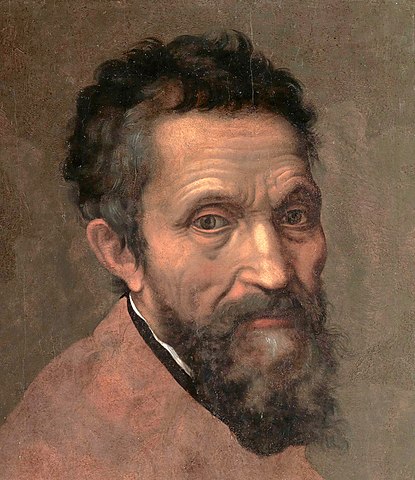
Portrait of Michelangelo attributed to Daniele da Volterra (c. 1545, Metropolitan Museum of Art). The deep, insightful gaze reflects the master who pursued the fusion of art and science. By Daniele da Volterra – Metropolitan Museum of Art
This article focuses on Michelangelo’s secret human dissections and sketches, detailing the depth of his anatomical knowledge, sketching techniques, and comparing them with the medical knowledge of his time. Furthermore, we will explore the importance of anatomy in artistic creation and the influence of Michelangelo’s research on the development of medicine. We will also consider the relationship between art and science during the Renaissance and the role of art in modern medical education.
Michelangelo and Anatomy
Michelangelo’s interest in anatomy began early in his artistic career. In Renaissance Italy, there was a revival of classical culture and knowledge, and a humanist worldview was spreading. In this context, artists began to pursue accurate representations of the human body, and anatomical knowledge became essential.
For Michelangelo, the study of anatomy was not merely out of curiosity. He was convinced that a deep understanding of the structure and function of the human body was key to creating sculptures and paintings full of vitality. However, human dissection was a challenging task in the society of that time. Church teachings considered dissecting human bodies a sacrilegious act and it was publicly prohibited.
Nevertheless, Michelangelo found opportunities for dissection. He built a friendly relationship with the prior of the Santo Spirito church and obtained permission to secretly perform dissections in the church’s mortuary. He also interacted with doctors at Florence hospitals and learned dissection techniques with their help.
Michelangelo’s dissections were mainly conducted at night. By candlelight, he would dissect a single corpse over several days, creating detailed sketches. This work was physically and mentally grueling, but Michelangelo’s curiosity surpassed the challenges.
Anatomical Sketches and Their Influence on Art
Michelangelo’s anatomical sketches were unparalleled in their precision and expressiveness. He observed and reproduced the structures of muscles and bones in detail. What’s particularly noteworthy is that his sketches were not mere anatomical records but were accompanied by artistic expression.
For example, his sketches of arm muscles not only accurately showed the attachment points and courses of muscles but also conveyed their three-dimensional texture and potential for movement. In his skeletal sketches, while the shapes of bones and joint structures were depicted in detail, they also expressed overall harmony and beauty.
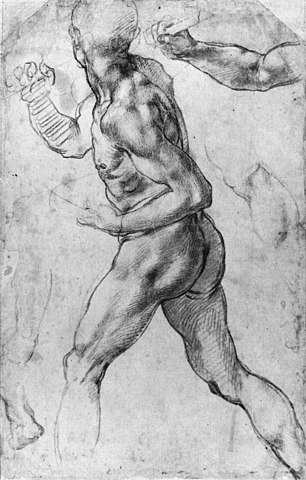
Michelangelo’s anatomical sketch of the human body. The structure of muscles and the potential for movement are precisely expressed. By Michelangelo
This anatomical knowledge greatly influenced Michelangelo’s artistic works. The most prominent example is the ceiling of the Sistine Chapel. This massive fresco contains over 300 human figures, each anatomically accurate and full of strength and vitality.
In particular, the figure of Adam in the “Creation of Adam” scene can be considered the culmination of Michelangelo’s anatomical knowledge. Adam’s body is accurately depicted with muscle protrusions and skeletal structure, while simultaneously conveying divine beauty and the breath of life. This representation embodies Michelangelo’s artistic philosophy of pursuing the ideal beauty of the human body, beyond mere technical accuracy.
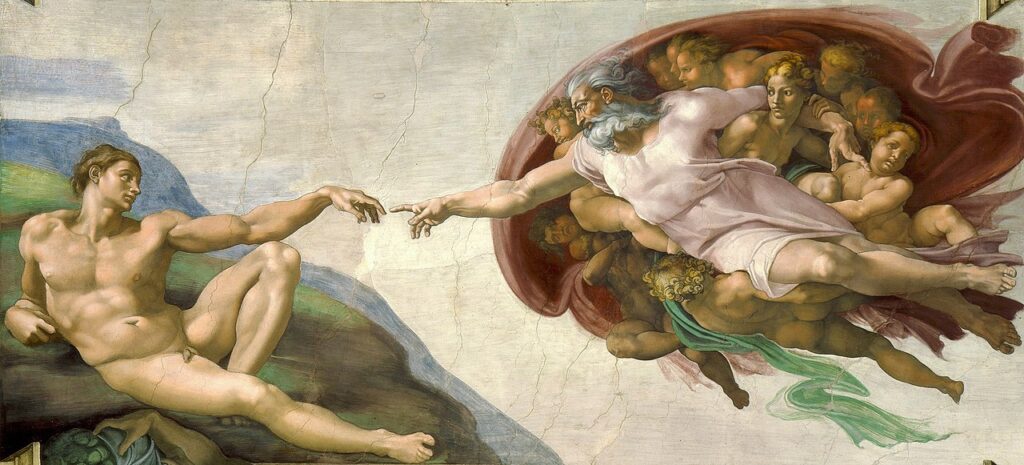
The ‘Creation of Adam’ from the Sistine Chapel ceiling. Michelangelo’s anatomical knowledge is reflected in his depiction of the human body. By Michelangelo
The influence of anatomical knowledge is also evident in his sculptural works. In the “David” statue, the young hero’s body is accurately sculpted down to the finest details, beautifully expressing muscle tension and skeletal structure. This statue became a monumental work not only depicting a biblical hero but also celebrating the perfection and beauty of the human body.
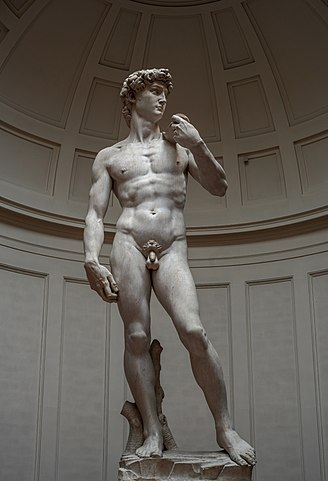
Michelangelo’s David statue. Precise muscle and skeletal expressions based on anatomical knowledge can be observed. By Commonists – Own work, CC BY-SA 4.0, Link
Anatomical Knowledge and Contributions to Medicine
Michelangelo’s anatomical sketches had a significant impact not only in the world of art but also in the field of medicine. At that time, medicine was still based on the classical theories of Galen, and knowledge based on actual human dissection was limited. In this context, Michelangelo’s detailed and accurate sketches became valuable resources for medical professionals.
In particular, his depictions of muscles and bones were more accurate and detailed than the medical books of the time. For example, Michelangelo accurately depicted the structure of the shoulder blade and humerus joint and understood its movement mechanism. This far exceeded the medical knowledge of the time.
Moreover, Michelangelo’s sketches included insights not only into anatomical structures but also into the movement and function of the human body. He understood the mechanisms of muscle contraction and relaxation and expressed them in dynamic pose sketches. These observations are thought to have contributed to the later development of exercise physiology.
Michelangelo’s anatomical sketches were secretly circulated and studied among medical professionals of the time. The doctors who saw his sketches were amazed by their accuracy and depth of insight and incorporated them into their own research. In this way, the research of Michelangelo, an artist, played an important, albeit indirect, role in the development of medicine during the Renaissance.
The Fusion of Art and Science
Michelangelo’s anatomical studies symbolize the fusion of art and science during the Renaissance. In this era, individuals known as “Renaissance men” emerged, demonstrating exceptional talent across various fields including art, science, and engineering. The prime example of this is Leonardo da Vinci, who was active at the same time as Michelangelo.
Leonardo also enthusiastically studied anatomy and left detailed sketches. However, there were some interesting differences between Michelangelo’s and Leonardo’s anatomical sketches. Leonardo’s sketches took a more scientific and analytical approach, showing an attempt to systematically understand the structure and function of the human body. For instance, Leonardo observed the structure of the heart and blood flow in detail, attempting to elucidate its function. He accurately depicted the four chambers of the heart and the mechanism of its valves, demonstrating an understanding of the heart that was revolutionary for his time.
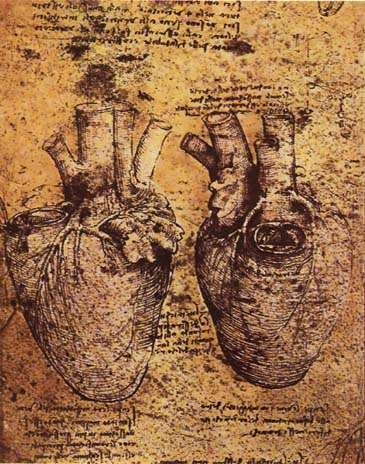
Leonardo da Vinci’s anatomical sketch of the heart. He observed and depicted the structure of the heart and blood flow in detail. This precise study demonstrates Leonardo’s scientific and analytical approach. By Leonardo da Vinci
On the other hand, Michelangelo’s sketches tended to emphasize artistic expression, aiming to capture the beauty and vitality of the human body. His muscle and skeletal sketches, while anatomically accurate, also conveyed a sculptural quality and the potential for movement. In particular, Michelangelo’s sketches of back muscles accurately capture their complex structure while beautifully expressing the strength and grace of the human body.
However, what both artists had in common was accuracy based on observation and a deep reverence for the mysteries of the human body. Their research demonstrates the potential for art and science to stimulate each other and deepen human knowledge and understanding.
The influence of Michelangelo’s anatomical research continued long after his death. In the latter half of the 16th century, the Flemish anatomist Andreas Vesalius is said to have referenced Michelangelo’s sketches in his book “On the Fabric of the Human Body”. Vesalius’s book is known as a groundbreaking work that laid the foundation for modern anatomy, and Michelangelo’s influence can be seen in some of its detailed anatomical illustrations.
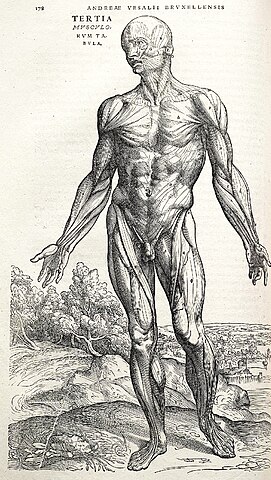
An anatomical illustration from Andreas Vesalius’s book ‘On the Fabric of the Human Body’. The precise depiction of the human body shows Michelangelo’s influence.
Furthermore, in the 18th century, the British anatomist William Hunter highly valued Michelangelo’s anatomical sketches and is said to have used them as teaching materials in his lectures. Hunter believed that the fusion of artistry and scientific accuracy in Michelangelo’s sketches was very effective in deepening students’ understanding.
In this way, Michelangelo’s anatomical sketches continued to influence both the fields of art and science over an extended period. His research not only contributed to the art and medicine of his time but also greatly influenced later scholars and artists, and his legacy continues to be passed down to the present day.
This fusion of art and science from the Renaissance period continues to have a significant impact on the modern world. Even in today’s medical education, artistic methods are sometimes used to visually understand anatomical knowledge. Medical students can gain a deeper understanding by sketching the structure of the human body.
Moreover, the field of modern medical illustration can be said to inherit the tradition of Michelangelo and Leonardo. The technique of visualizing highly specialized medical knowledge in an easy-to-understand manner cannot be achieved without the fusion of art and science.
Modern Influence and Conclusion
Michelangelo’s anatomical sketches continue to influence medical and art education even after more than 500 years. For example, in some American medical schools, observing Michelangelo’s works in art museums is incorporated as part of anatomy classes. The aim is to gain a deep understanding of the human body through artworks and develop observational skills.
Particularly noteworthy is the “Art and Anatomy” program at Johns Hopkins University School of Medicine. In this program, students study Michelangelo’s anatomical sketches in detail and compare them with modern medical knowledge. By learning both the artistic and scientific accuracy of Michelangelo’s sketches, students gain a deeper understanding and insight into the human body.
Modern artists also continue Michelangelo’s tradition, incorporating anatomical knowledge into their own creations. Especially in the fields of figurative art and digital art, accurate anatomical knowledge greatly affects the quality of the work. Michelangelo’s anatomical approach is still referenced in character design for movies and games. These artists, like Michelangelo, pursue a balance between scientific accuracy and artistic expression.
What Michelangelo’s anatomical sketches show is that art and science are not separate entities, but are closely linked as sources of human knowledge and creativity. His research aimed not only to understand the physical structure of the human body but also to capture the mystery and beauty of life within it. This attitude provides important insights for us in the modern age.
Interestingly, the influence of Michelangelo’s anatomical sketches extends to modern medical technology. For example, in the field of 3D medical imaging, the three-dimensional expression techniques seen in Michelangelo’s sketches are referenced. When creating 3D images from CT scans and MRIs, medical technologists apply the shading and perspective techniques used by Michelangelo to create more intuitive and easy-to-understand images.
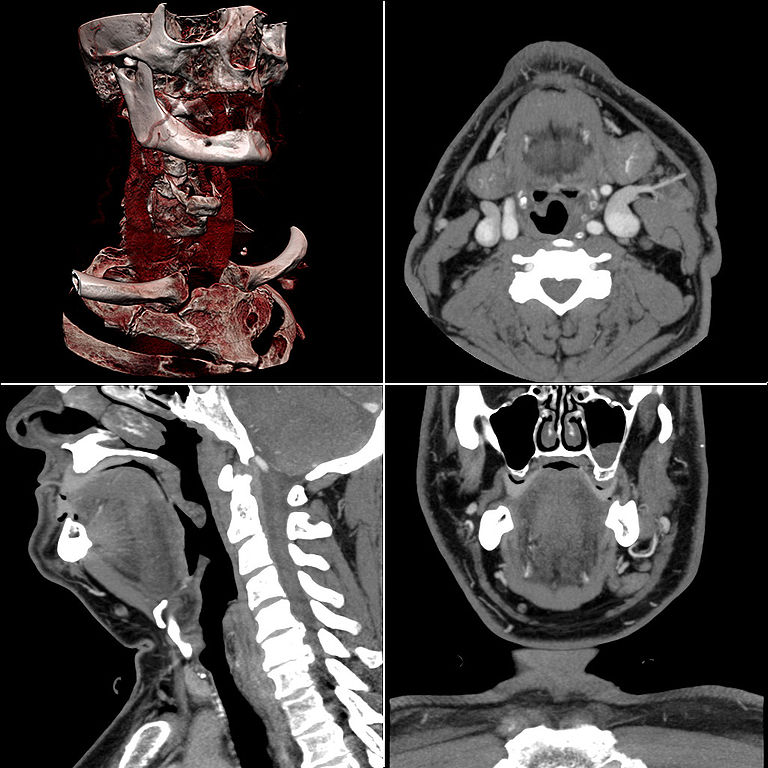
Modern 3D medical imaging technology. Michelangelo’s three-dimensional expression techniques influence even the latest medical technologies. en:User:ChumpusRex, CC BY-SA 3.0
Additionally, in the fields of orthopedics and plastic surgery, Michelangelo’s anatomical knowledge and aesthetic sense are highly valued. Particularly in facial reconstruction surgery, the muscle and bone structures of the face drawn by Michelangelo are sometimes referenced. His precise observations and artistic expressions contribute to natural and harmonious facial reconstruction.
Furthermore, Michelangelo’s anatomical sketches play an important role in the field of sports medicine. His depictions of muscle movements and joint mechanisms are utilized in analyzing the performance of modern athletes and preventing injuries. Michelangelo’s dynamic human body expressions continue to provide valuable insights into understanding the mechanisms of human movement.
In modern society where science and technology are rapidly advancing, art and science are often perceived as opposing entities. However, as Michelangelo’s example shows, the fusion of the two holds the potential to bring new insights and creativity. Even in the fields of medicine and life sciences, artistic sensibility and expressive power can play important roles.
For instance, there is a field gaining attention in recent years called “bioart”. This is a new art form that creates artworks using biological materials and techniques. Bioartists, like Michelangelo who fused anatomy and art, combine cutting-edge life science technologies with artistic expression to explore the mysteries of life and ethical issues. This field demonstrates the possibility of expression that transcends the boundaries of art and science, and can be said to inherit Michelangelo’s spirit in the modern era.
Conclusion
Michelangelo’s anatomical sketches are not mere historical artifacts but possess universal value that resonates even in the present day. They represent the fusion of scientific rigor in pursuit of the truth about the human body and artistic sensibility striving to express its beauty and mystery. This fusion is what made Michelangelo a true “Renaissance master,” and even 500 years later, it continues to suggest new possibilities for creation and discovery to us.
Michelangelo’s legacy lives on in modern medical education, artistic creation, and the development of scientific technology. His anatomical sketches not only play an important role in understanding the structure and function of the human body but also continue to inspire us as symbols of human creativity and curiosity.
Moreover, Michelangelo’s spirit is reflected in today’s interdisciplinary approaches. Many universities and research institutions are creating new academic fields that fuse art and science. For example, the field of “neuroaesthetics” scientifically studies how the brain is affected by the appreciation of artworks. This can be seen as a further development of the fusion of art and science that Michelangelo pursued, using modern technology.
Finally, what Michelangelo’s anatomical sketches teach us is the importance of observation. He did not simply accept existing knowledge but made new discoveries by observing with his own eyes and drawing with his own hands. This attitude is extremely important in modern scientific research and artistic creation as well.
Spanning 500 years, Michelangelo’s spirit continues to illuminate our path of creation and exploration even today.
